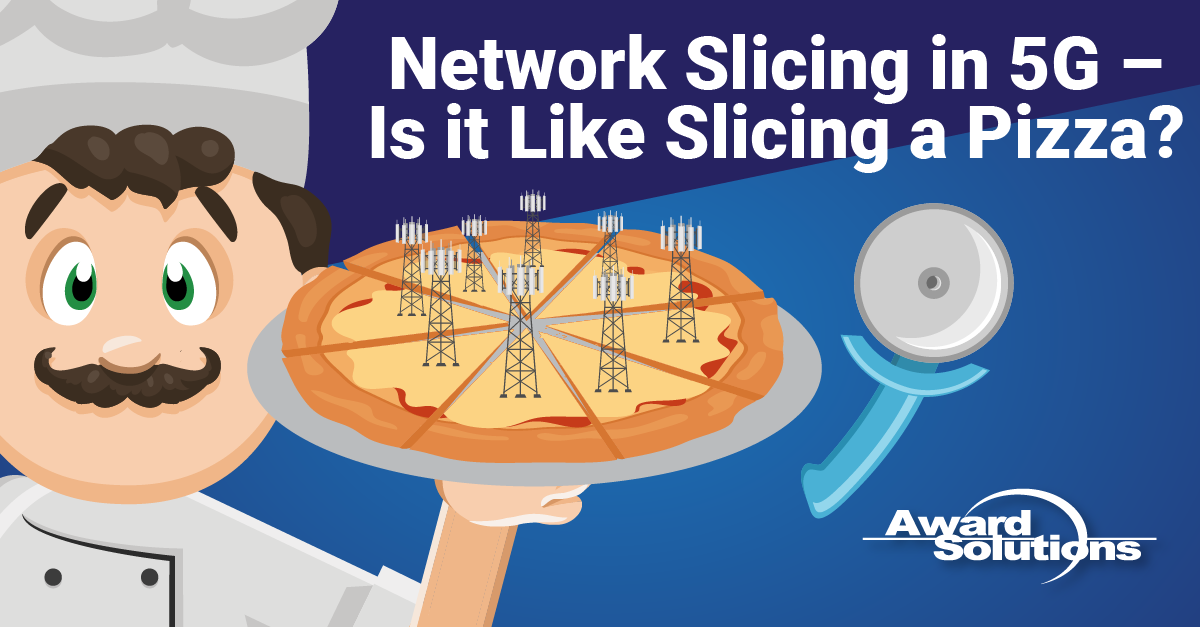
Because a “one-size-fits-all” network approach doesn’t work for different 5G services with differing service performance needs, network slicing is a fundamental feature of the 5G network. Network slicing allows a mobile network operator to organize the 5G network into end-to-end logical network slices where each slice can be optimized independently for the type of services it supports. Unlike slicing a pizza, depending on how network slices are defined, some aspects of the operator’s network can be dedicated to a single slice, and some network elements can be shared across slices.
What’s Getting Sliced?
A network slice, as a logical end-to-end network within an operator’s wireless network, includes parts of the 5G Core network, parts of the RAN, and the parts of the transport network needed to support users’ registrations and data sessions with a given services network. Fundamental to network slicing is the flexibility for network resources to be either dedicated to a single network slice or shared across multiple slices. For example, a network slice to support mission-critical applications may have some dedicated 5G core network functions and a dedicated part of the Radio Access Network (RAN). In contrast, a network slice for an enterprise customer may have some dedicated 5G core network functions but share common transport and RAN resources with other slices. This flexibility allows network operators to efficiently meet Service Level Agreements (SLAs) and maximize data security for enterprise customers.
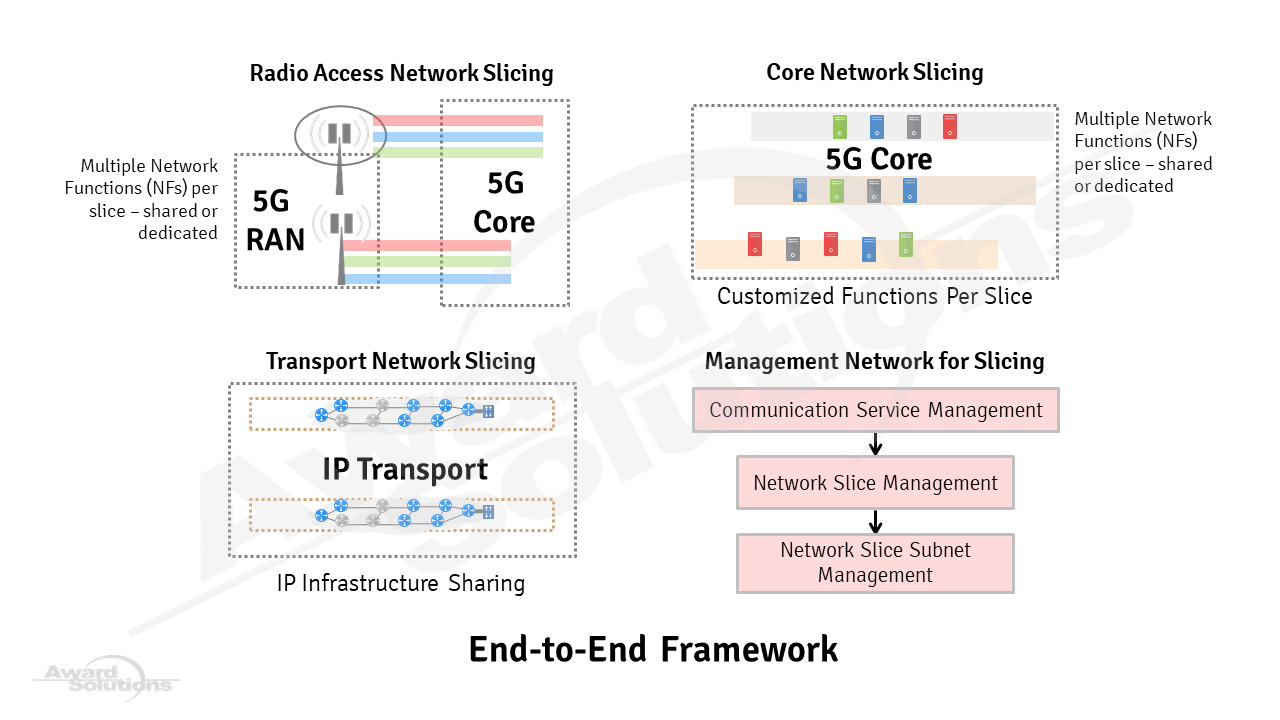
Components of a Network Slice
Slice Management
A network operator can independently manage network slices. Wireless network standards describe a hierarchical organization for slice management. A Communication Service Management Function (CSMF) translates the communication service (e.g., web browsing) into a set of requirements for the Network Slice Management Function (NSMF), which in turn translates them into requirements for its associated network slice subnets (e.g., the RAN slice subnet). The Network Slice Subnet Management Function (NSSMF) works with network management and orchestration (NFV MANO) to deploy, configure, and monitor everything needed to support the implementation of the slice subnet in the network.
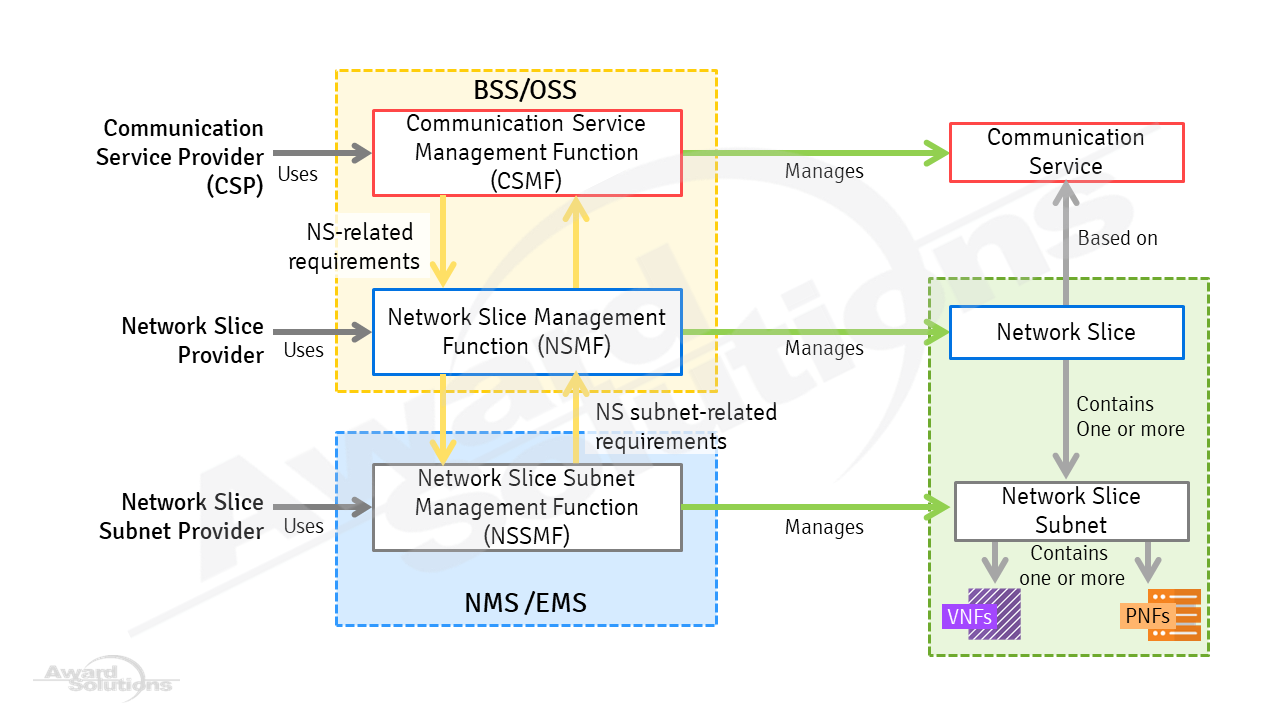
Network Slice Management Framework
5G Core Slice
Dedicating functions of the 5G Core network to a network slice provides a level of isolation for services and the user traffic associated with those services. In this way, functions are designated as dedicated or shared when network slices are defined for the 5G Core network. For example, an Access and Mobility Management Function (AMF) can be shared by all slices to offer simplified registration and authentication to all users. In contrast, a User Plane Function (UPF) for enforcing Quality of Service (QoS) and forwarding user traffic, when dedicated to one slice, will not impact user traffic in other slices if it fails.
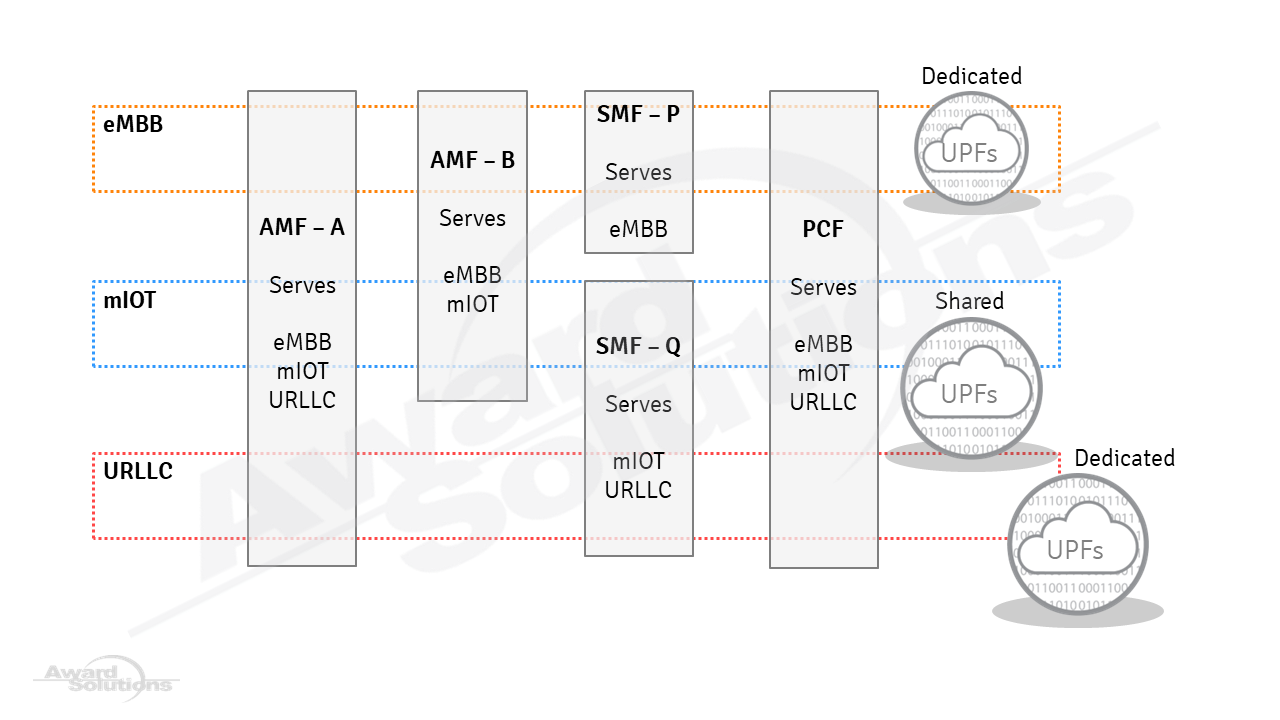
Dedicated and Shared 5G Core Network Functions
5G RAN Slice
The Radio Access Network (RAN) can also be sliced, even though it is somewhat less defined than the slicing of core network functions. Much like some vendors allowed the control of different traffic QoS in LTE networks, a RAN slice can control operations relating to users (and their data traffic) within one slice differently from users operating in another slice. One way is to associate things like Radio Access Technology type, frequency band, and bandwidths to a slice. Additionally, operations for user traffic can be slice-specific in terms of encryption, scheduling, modulation, and coding scheme selection.
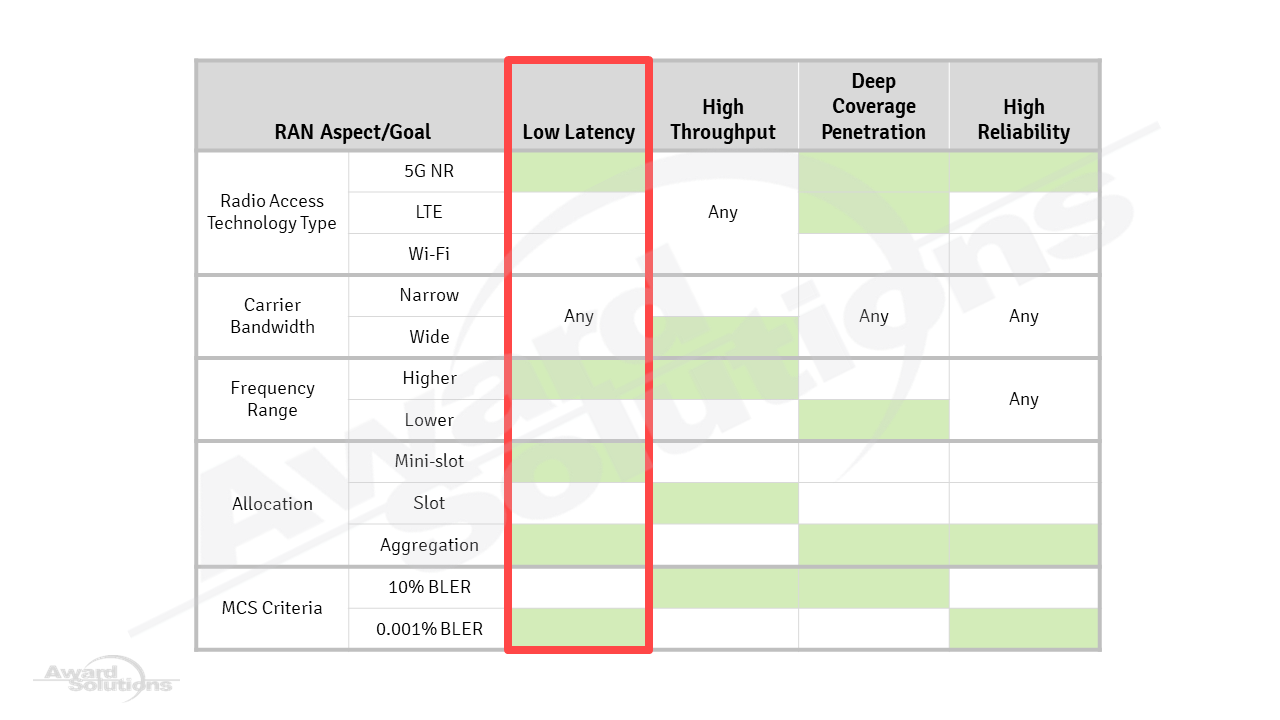
RAN Slicing Considerations
Transport Network Slice
In much the same way that network functions or operations can be assigned to slices, aspects of the transport network can be assigned as well – either as dedicated to the slice or shared across slices. One possible mechanism for transport network slicing is for slice management to coordinate with the Software-Defined Network (SDN) controller to identify transport network segments for the slice. This way, transport network segments can be associated with one or more network slices.
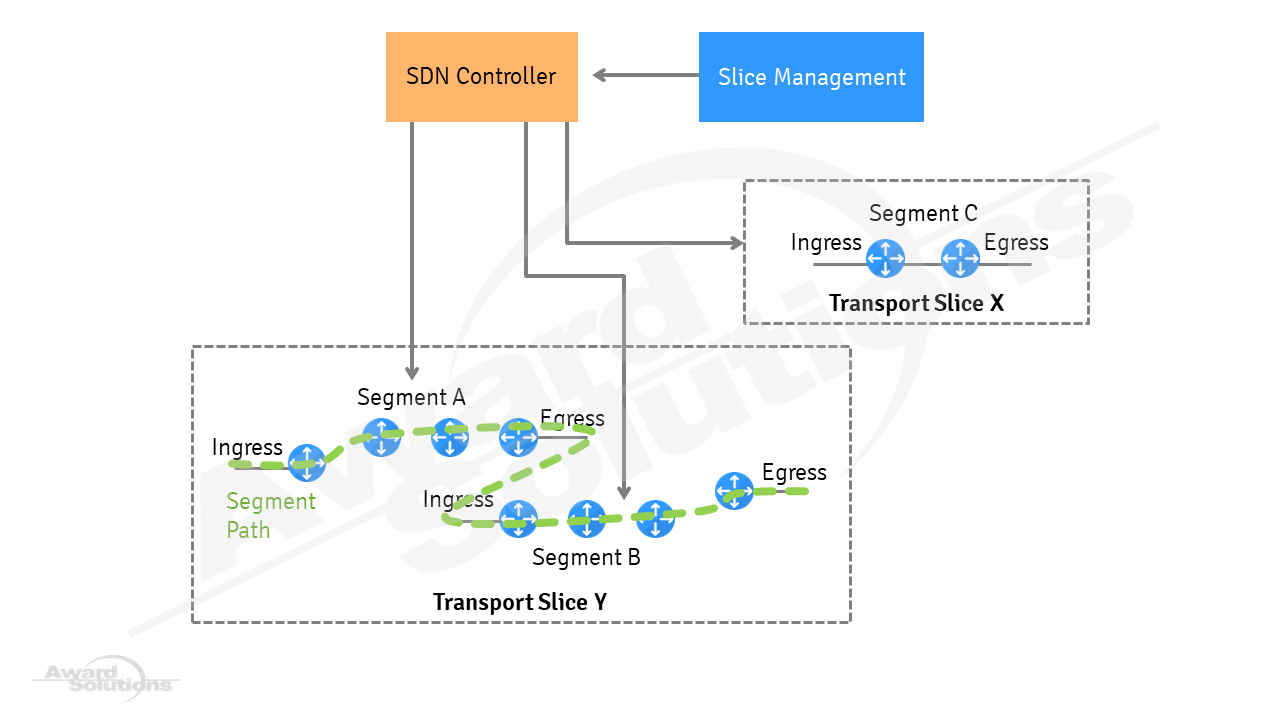
Segment Routing: A Possibility for Transport Slices
Conclusions
Network slicing fundamentally redefines how networks are designed and deployed for 5G. The ability to designate aspects of the network as either dedicated to a single slice or shared across several slices gives the network operator the flexibility of simplifying the network while addressing SLAs and security needs.
A network slice is a logical end-to-end network made up of parts of the 5G Core, parts of the RAN, parts of the transport network, and even network management, specific for a single slice – everything needed for a slice to provide user services.
So, unlike slicing a pizza and creating multiple independent networks out of one, network slicing allows operators to assign resources to or across different network slices as needed. With network slicing, you can have multiple pizzas and eat them too.
